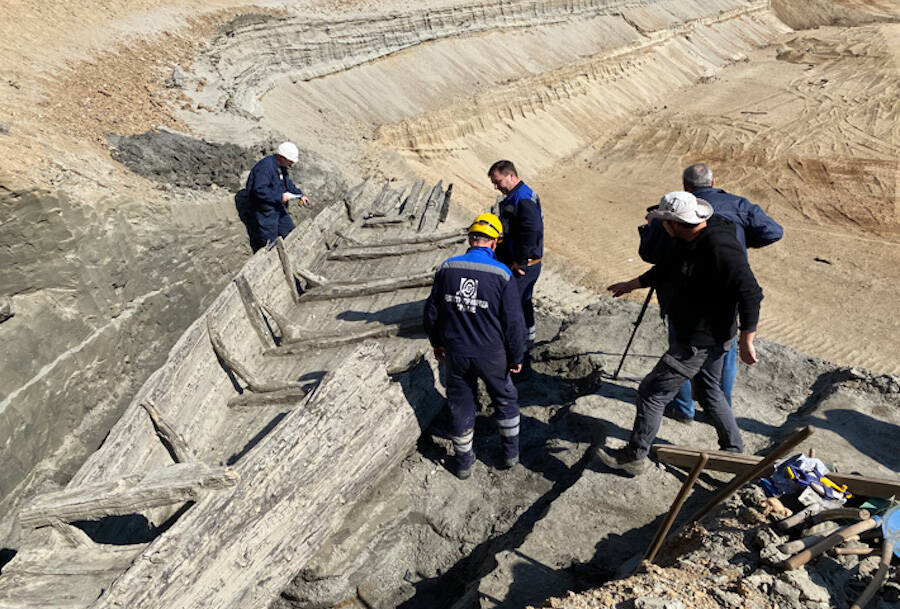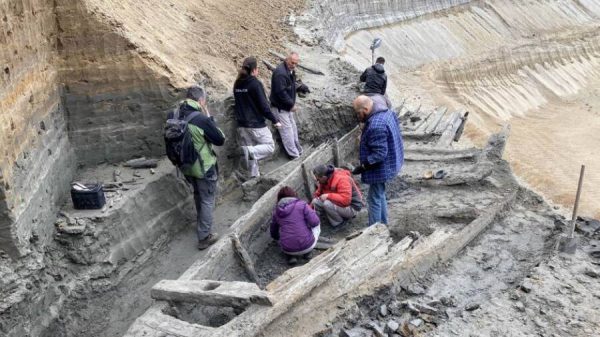Roman Shipwrecks Discovered at a Serbian Coal Mine

Plunging a massive hoe into the earth is hardly the best way to uncover archaeological treasures laying hidden and unseen deep underground, sometimes for countless centuries.
But occasionally, construction crews and others who work outdoors on big projects do just that, however unwittingly, until work is stopped and archaeologists are called in.
That’s precisely what happened in Serbia in mid-March, when miners found they weren’t uncovering coal, but rather the remains of three ships more than 1,300 years old, experts now say.

Fortunately, although the biggest of the three sustained damage from the mining equipment, work was called to a halt and archaeologists were brought to the site immediately.
The team, from the Archaeological Institute in Kostolac, were able to gather most of the ships’ pieces and return them to their home base at the institute.
The crew was working at the Kostolac coal mine in eastern Serbia; the mine is located near the former ancient Roman city of Viminacium, a place where once military leaders kept warships on the Danube. Experts say that the mine is actually sitting atop, in a sense, a former artery of the famous river.
The biggest of the three ships sustained quite a bit of damage from the indelicate mining equipment, to the crew’s and archaeologists’ regret.
But the miners had no way of knowing what they were actually excavating until it was almost too late. About 35 percent of it, one archaeologist said, was ruined.
Nonetheless, Miomir Korac, director of the institute and head of the Viminacium Science Project, said last month that “…we should be able to reconstruct it almost in full,” he told news website Arstechnica.com.
The largest is approximately 49 feet in length, with spaces constructed for a minimum of six pairs of oars; it had a flat bottom, and could hold more than 30 sailors.
These clues, coupled with his knowledge of Roman ship building methods, have led Korac to the conclusion that the vessels are at least 1,300 years old.

He would like to confirm the evidence by having wood samples tested at a lab, but all testing facilities are temporarily closed down because of safety precautions being taken to prevent the spread of the coronavirus.
However, eventually the wood will be more fully examined. And so, too, will the excavation of the remaining boats, but for now — just like all archaeological projects — work is suspended because of the virus.
Yet Korac offered some insights based on the samples he was able to have collected. The smaller boats, he believes, were not used in any conflicts, because of their size and construction.
He thinks they were used solely to transport individuals across the Danube.
They were both carved, he explained, from one sole tree trunk; they have no evidence of being in a battle — no scars on the wooden frames, or any other mark that might indicate they encountered enemies on the river.
He said that it’s possible the boats were evacuated and abandoned, for reasons he can only guess at for the moment; not much more can be learned until the labs, and the archaeologists, can get back to work in a normal way.
Of one thing Korac is certain: the ships were not laden with cargo and sunk; there is no evidence to support that at all, he explained.
But he cannot learn more, or investigate further, until life in Serbia — just like everywhere else around the globe — gets back to some semblance of order and normalcy when the pandemic abates.
An Incredible Artifacts From Lost Viking ‘highway’ Revealed by Melting Ice
Until then, he and his colleagues continue to make educated guesses about the three Roman ships, and are very glad the vessels didn’t accidentally sustain more damage during the mining operation — another endeavour that is, for now, completely on hold.
